Read all about ADAS technology, including common terminology and explanations of buzzwords within the field.
ADAS Space in the Auto Body Shop:
Think Inside the Box
Related Articles
- ADAS False Activation Evolution
- Steering Angle Sensor Operations
- Vehicle Electronics: In-House or Sublet?
With advanced driver-assistance systems (ADAS) so constantly in the air, most collision repair facilities have considered the question of whether to take on calibrations. It’s hard to see why the answer would not be yes.
First, there are clear positive reasons to doing so. It’s profitable work, and there will be almost literally no end to it. Not only will ADAS continue to grow and grow, but it’s a near certainty that any vehicle that makes it onto a collision repair facility’s lot will need calibrations.
Second, as time goes on, can you really afford to pass? If you decline ADAS calibrations, there’s little reason to believe your competition will. But even with a readiness to take on ADAS, there’s another question: Do I have the space to do it?
That answer is also yes.
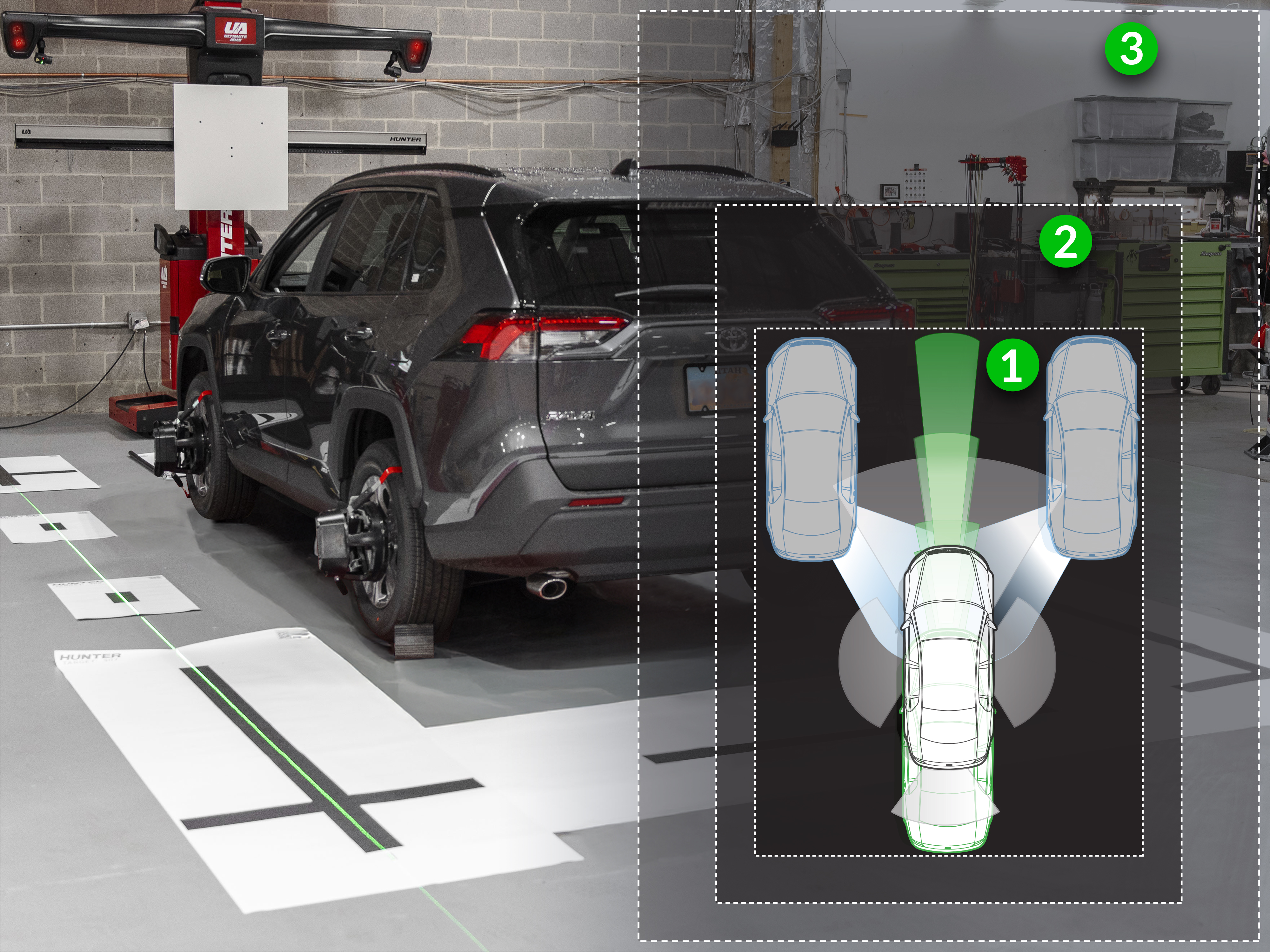
A Common Misperception
There’s a common perception — make that misperception — that doing ADAS work requires basketball-court space that only the largest shops would have. That’s only true in one peculiar sense: If you wanted to be equipped to do every possible calibration for every possible model without ever moving the vehicle, yes, you would need some room. In actual practice, it’s nothing like that.
That’s because the vast majority of calibrations — possibly up to 90% — require only the space every collision repair facility in the country already has: 10 to 30 feet in front of the vehicle, and you would rarely even need 30. That area covers the true bread and butter of ADAS, which is calibrating forward-facing cameras and radar.
This fact is usually overlooked when discussing ADAS, which explains how the “you need a ton of space” idea gets started. Rather, the plain truth is you would seldom if ever need a ton of space. You already have all you need to keep plenty busy.
Here are some examples of the forward space needed for common recent model calibrations:
- Audi/VW camera and Audi/VW lane departure: 5 feet
- Audi/VW ACC sensor, Toyota/Lexus camera and BMW radar: 4 feet
- Mazda 6 camera: 6 feet
- Nissan radar: 4 feet.
So, when you hear of large areas needed for ADAS, such as 40-by-60 feet, they usually refer to ADAS calibration centers. Those are full-fledged specialists doing all manner of ADAS all day, every day, multiple vehicles at a time. They need that space, but you don’t.

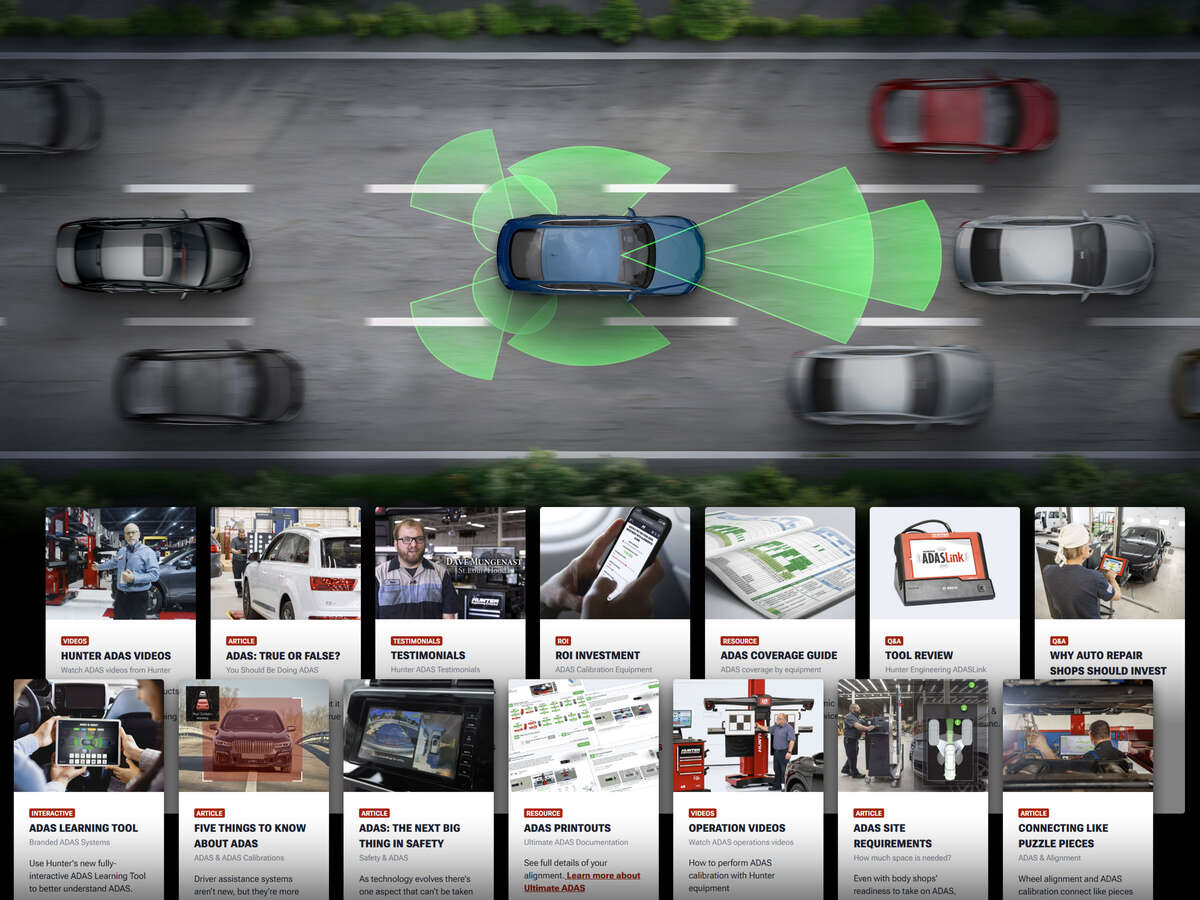
Expand your knowledge and awareness on Advanced Driver Assistance Systems (ADAS) with articles, videos, interactive tools, and downloads.
Room for Creativity
To be fair, a collision facility will see more calibrations that don’t involve forward-facing components than other shops, since there are multiple ways to damage a vehicle. Nonetheless, even calibrations that do require a little more room, such as surround view and blind spot, are still well within reach. Here’s why: There is almost always room to maneuver.
For example, diagrams for a blind spot monitor will commonly show the vehicle sitting smack in the middle of a 40-by-60 bay, with optimal free space on each side. Let’s say your bay checks in at 25-by-34. Are you out of luck? Not at all. Think inside the box, rather than outside.
There’s no rule that says you can’t move the vehicle around the bay to gain the space you need. Back to front, side to side, corner to corner. Vehicles aren’t the only things on wheels; so is most of your shop equipment! And it can be moved. If necessary, you can employ two bays to get everything done.
The return on investment (ROI) on ADAS calibrations will justify it. This ability to adjust is worth emphasizing, since it gets to the heart of the matter when it comes to available space.
Most wrecks involve the front of a vehicle against an inanimate object or the rear of a vehicle against another car. Rarely would you need to calibrate front and rear components on the same car.
But even if you did, so what? They don’t have to be done simultaneously. Front and rear calibrations are separate events. Simply move the car.
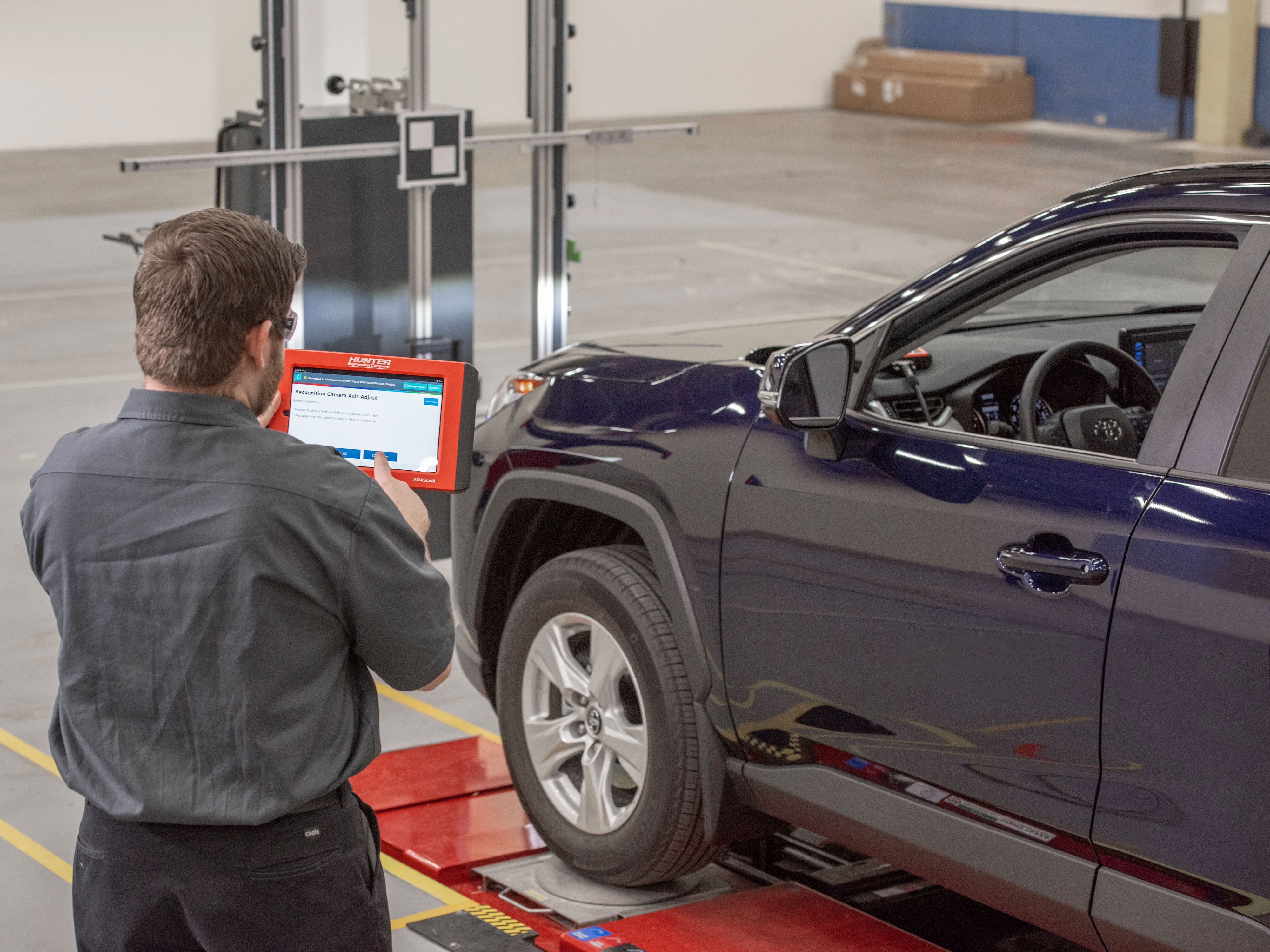
OEM Requirements
Planning around varying OEM requirements is another concern that can give shop owners pause. ADAS calibrations are generally similar across the board, but they’re not identical. For example, size and type of targets will often differ from make to make — sometimes even from model to model. Not everything works exactly the same way all the time.
So, there are imaginable scenarios where you could collect many more OEM target packages than you have a true need for — there’s your space problem — or when particular calibration X on particular model Y needs more room than you’ve feasibly got.
Yet such what-ifs should not be dealbreakers, because you will have planned to avoid them. Getting started with ADAS is like getting started with anything else: Start small with the makes and models you most frequently see, develop confidence and expertise as you go, and work your way up into more sophisticated equipment and more exotic procedures.
As noted, you need not anticipate doing every possible calibration in the book. Therefore, you need not be discouraged by all the OEM variations you could possibly encounter and end up avoiding doing any ADAS work at all. Investigate options, match them to your prior experience, and do what makes the most sense for your business.
Subletting
Does subletting ADAS make the most sense for your business? There will be situations, such as when you’re just getting started and don’t yet feel comfortable with certain calibrations, where it does. Beyond those times, however, we don’t recommend it as general practice. Why? Because this is your shop, and these are your customers. ADAS should be your work.
There are several solid reasons to keep ADAS under your roof. First, you’re providing superior service to your customers by reducing cycle time and maintaining a full-service relationship. Second, you’re providing superior service to your own business.
Subbing out this work nets you the worst of both worlds. You give away control and profit but retain responsibility and liability. That’s the very definition of more trouble than it’s worth.
ADAS can be very profitable work, and the more skilled you get at it, the more you can get done. Better to master the business and reap the fruits of your own labor than give it away.
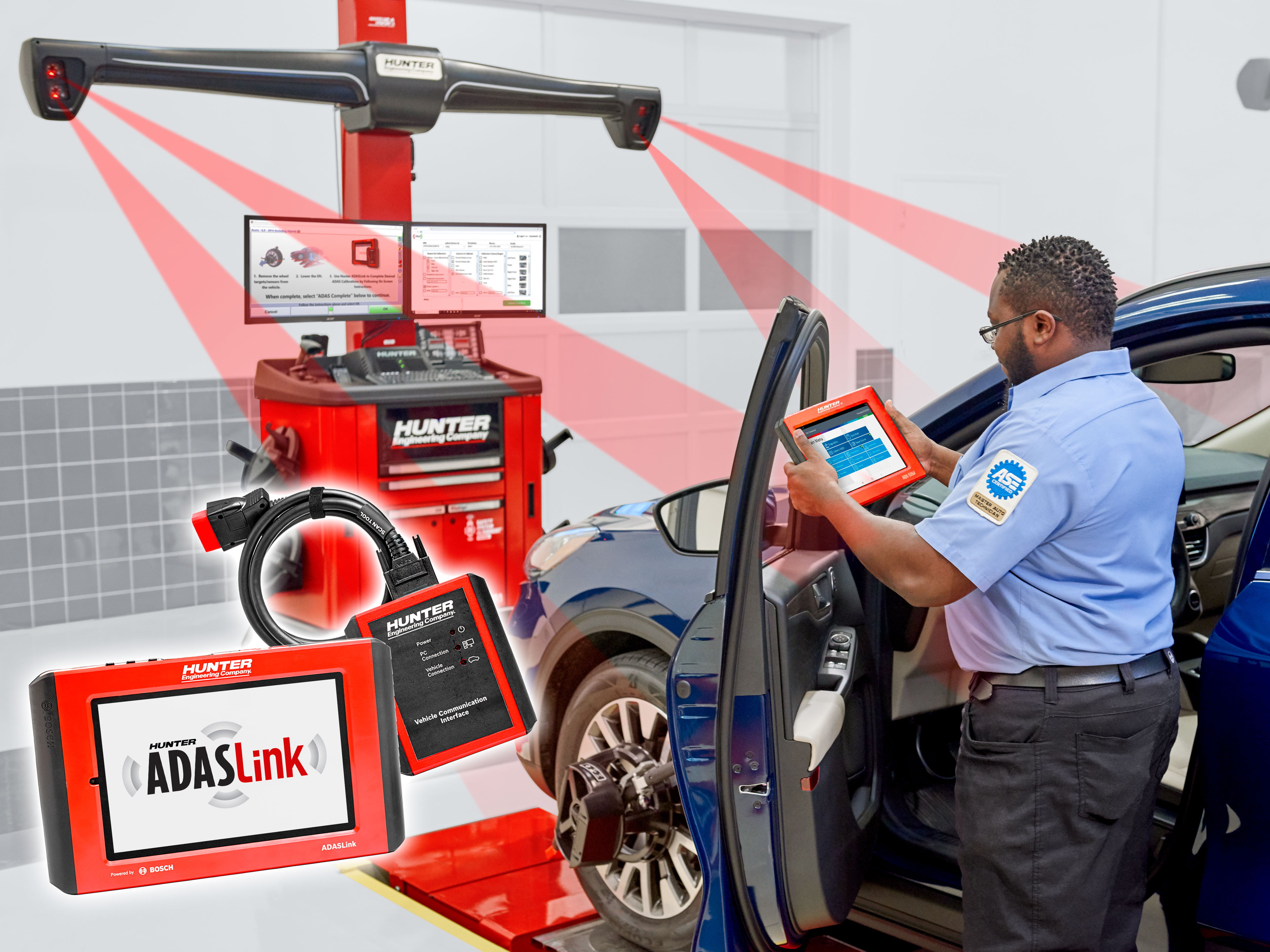
The Ultimate Bottom Line
There’s one more super important consideration for taking on as much of this work as you can: not allowing your customers to lose sight of why ADAS exists in the first place. ADAS is a highly sophisticated safety system, and it works. Yet studies have shown more than half of drivers turn off at least some ADAS components because they find them annoying.
It may fall to you, appropriately as you stand there in a collision shop, to provide some education on that misguided practice. What helps you in business helps them in life.
There are times when subletting ADAS work may be the way to go. And there are also times when that time is up.
That was recently the case for Complete Collision Center (CCC) in St. Robert, Mo. Why? Control.
“It was a nightmare,” says owner Jim Smith. Hauling cars an hour away. Explaining delays to customers. Responsibility for others’ work. “That drove our decision to examine bringing ADAS in-house.”
Smith turned to Hunter Engineering for help.
“We didn’t buy just the ADAS equipment. We bought the whole package,” he says.
“We got everything we need to accommodate our customers, and properly do ADAS and alignment procedures for the vehicles we work on.”
In doing solid work for customers, CCC is doing the same for itself by adding a 60×80 building directly behind the present shop.
“We’re enlarging so we can do things the way we want to do them, knowing that we’re putting our customers in a safer vehicle.”
Hunter is top-of-the-line equipment, Smith says, and pairing it with good support makes it a double win.
“I would recommend Hunter to anyone who has any interest in getting into this business. It’s been wonderful.”
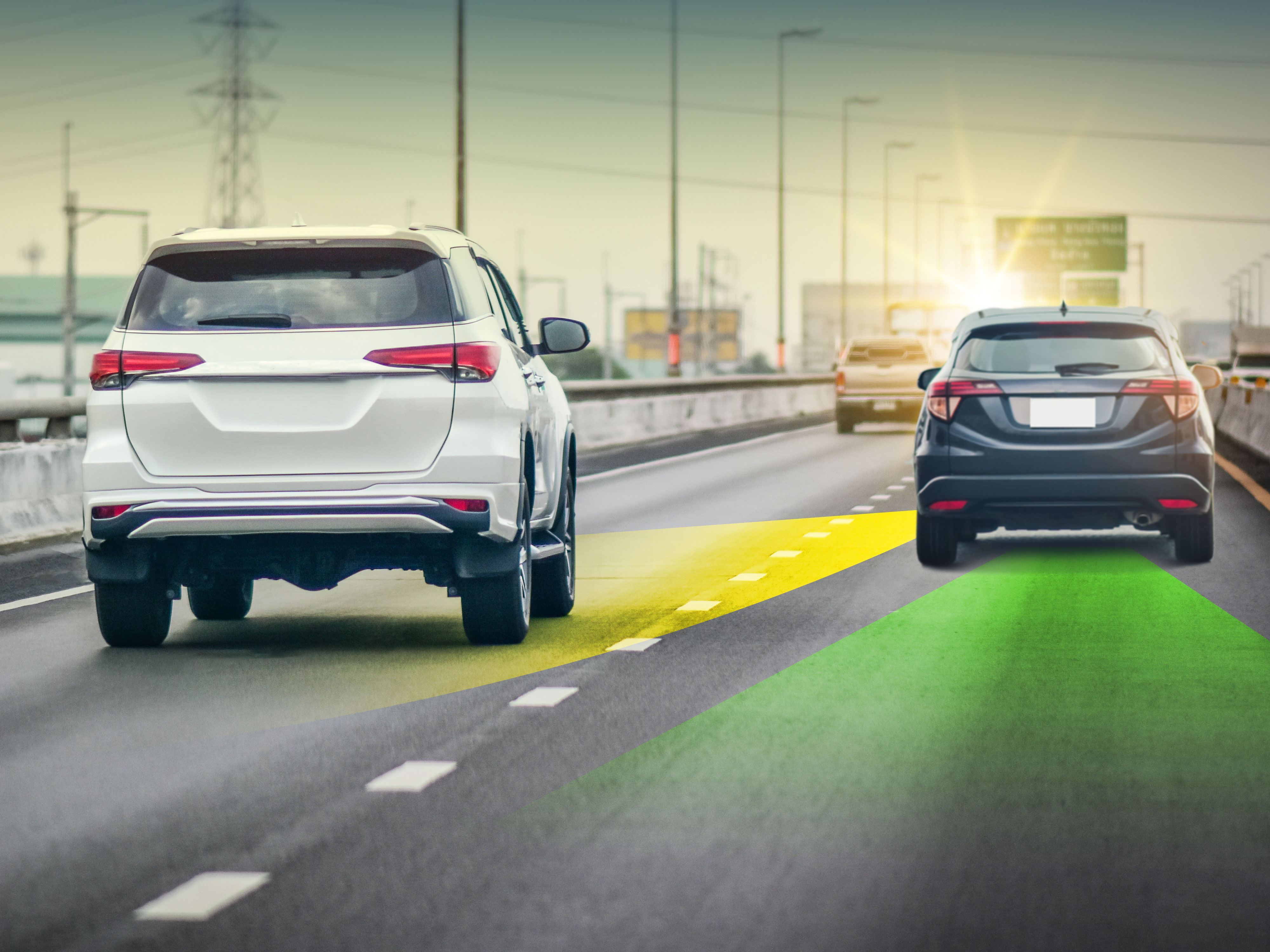
What is ADAS?
Learn the Basics
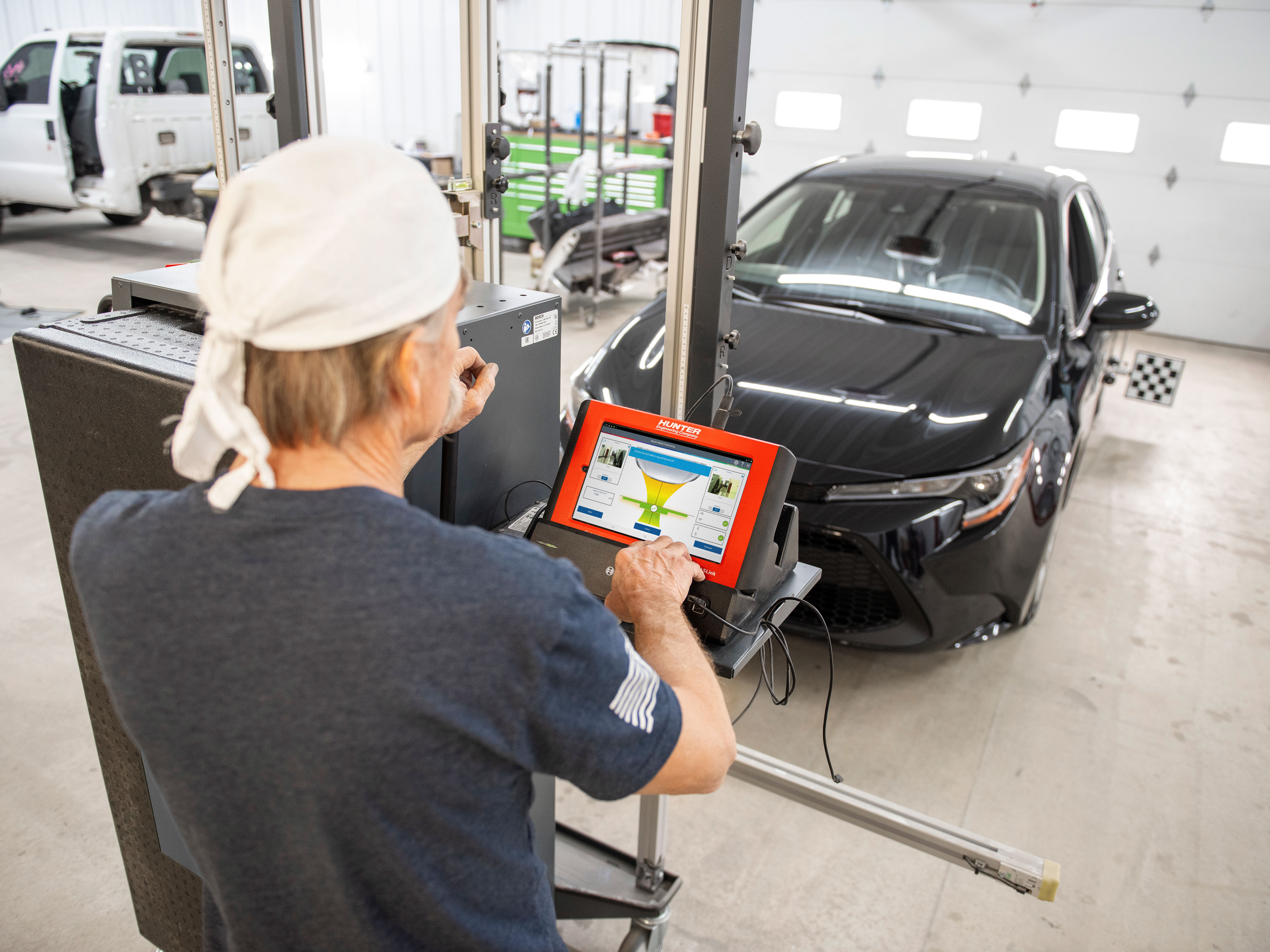
Why Auto Repair shops should invest in ADAS
Fender Bender
From Alignment Acorns, Mighty ADAS Oaks Grow...
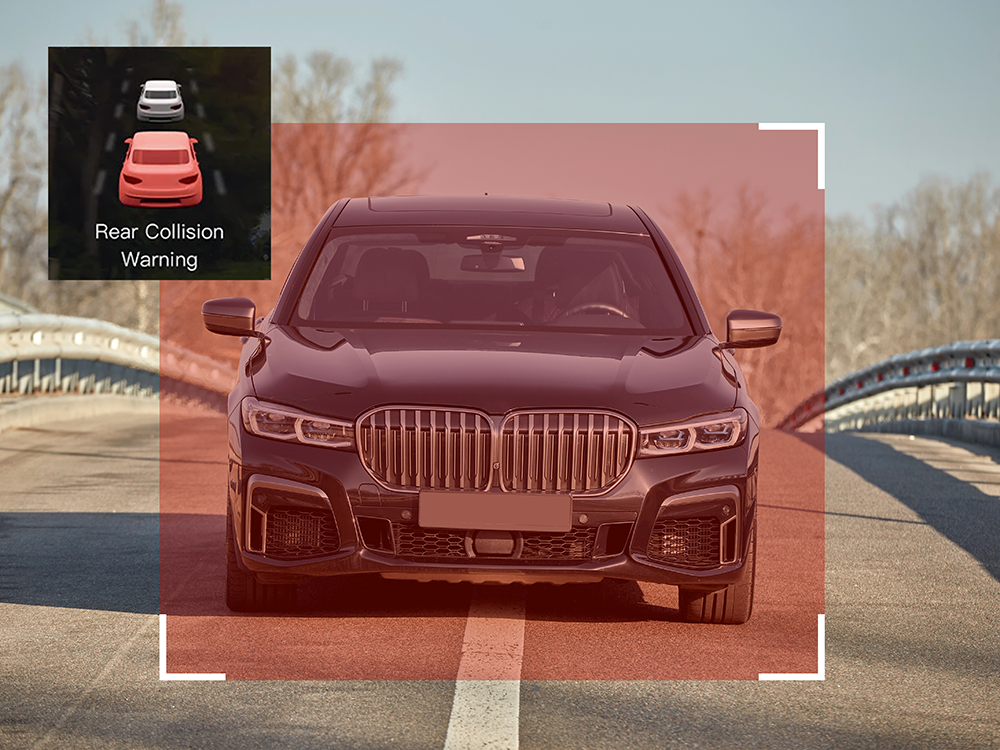
Five Things to Know About ADAS
ADAS & ADAS Calibrations
Driver assistance systems aren’t new, but they’re more popular than ever. Here’s what you need to know.
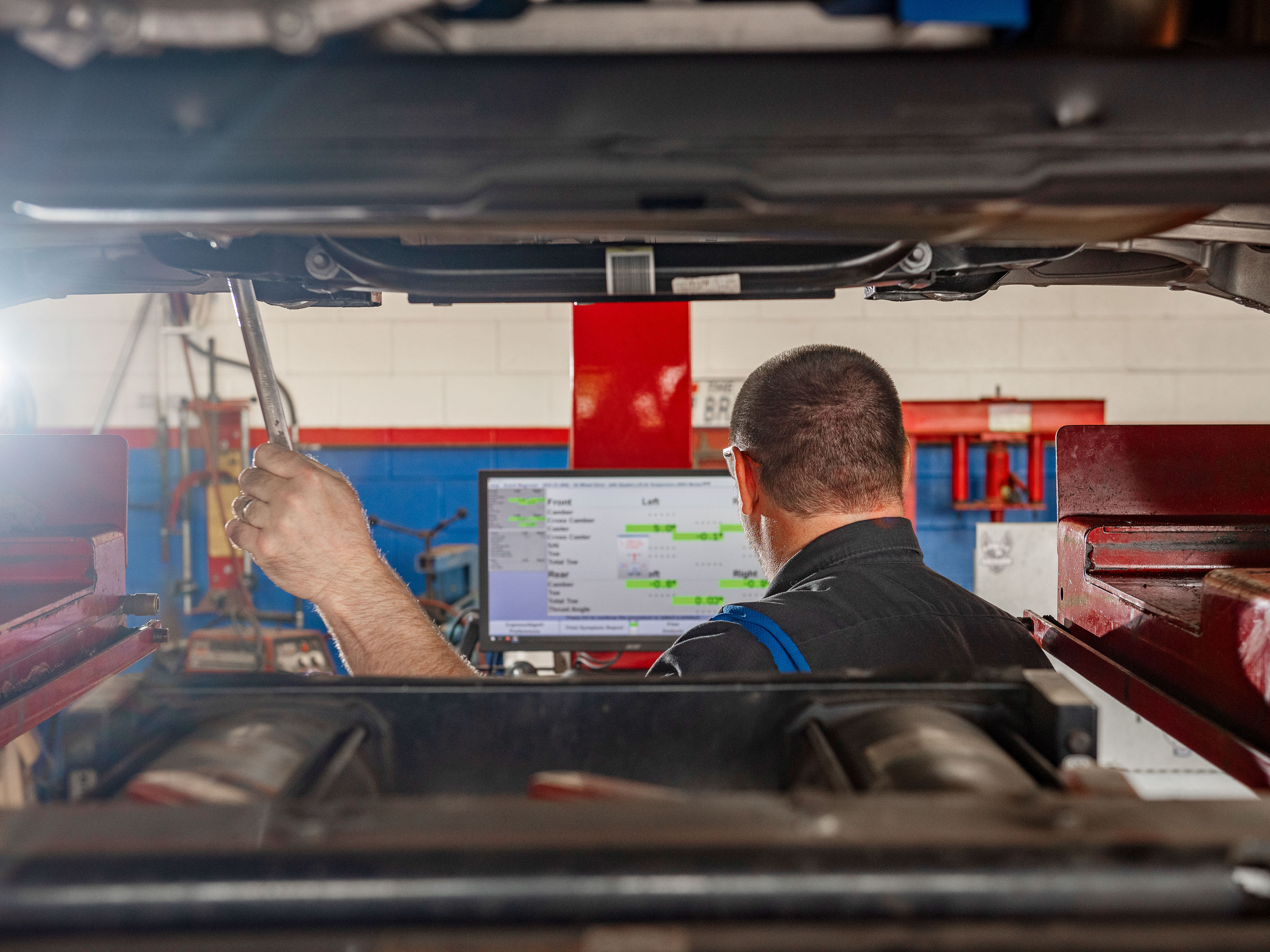
Connecting like Puzzle Pieces
ADAS & Alignment
Wheel alignment and ADAS calibration connect like pieces in a jigsaw puzzle. If you don't know where the wheels are going...

ADAS Learning Tool
Branded ADAS Systems
Use Hunter's new fully interactive ADAS Learning Tool to better understand ADAS.
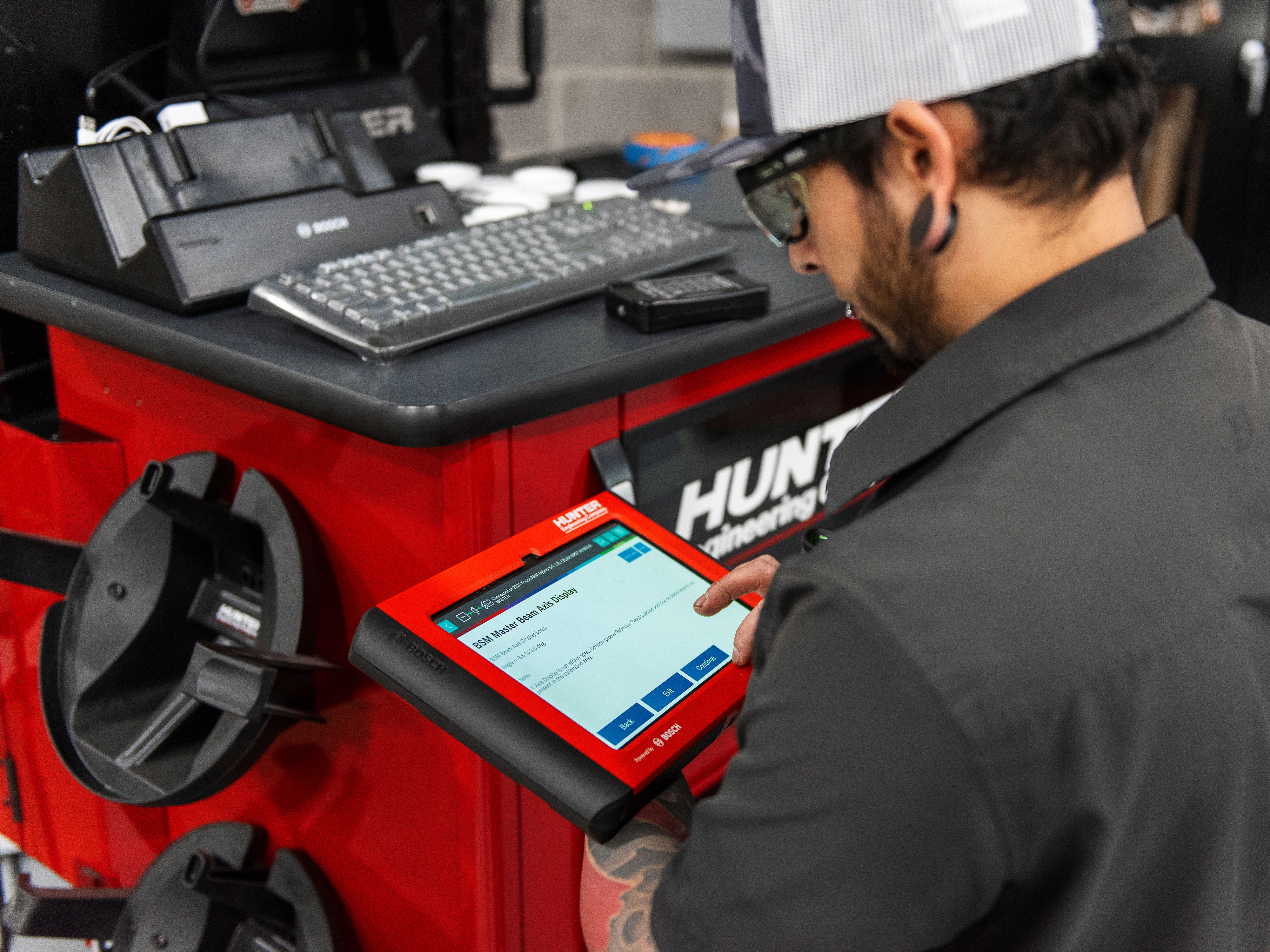
Flipping the ADAS switch
Tire shops are a natural habitat for ADAS calibrations. Invite them in.
When you think of a tire shop, you think of an alignment system. And when you think of an alignment system, you think of ADAS calibrations.
OK. Maybe not just yet for tire shops. But...

ADAS: The Next Big Thing In Safety
Safety & ADAS
As technology evolves there's one aspect that can't be taken lightly: safety.
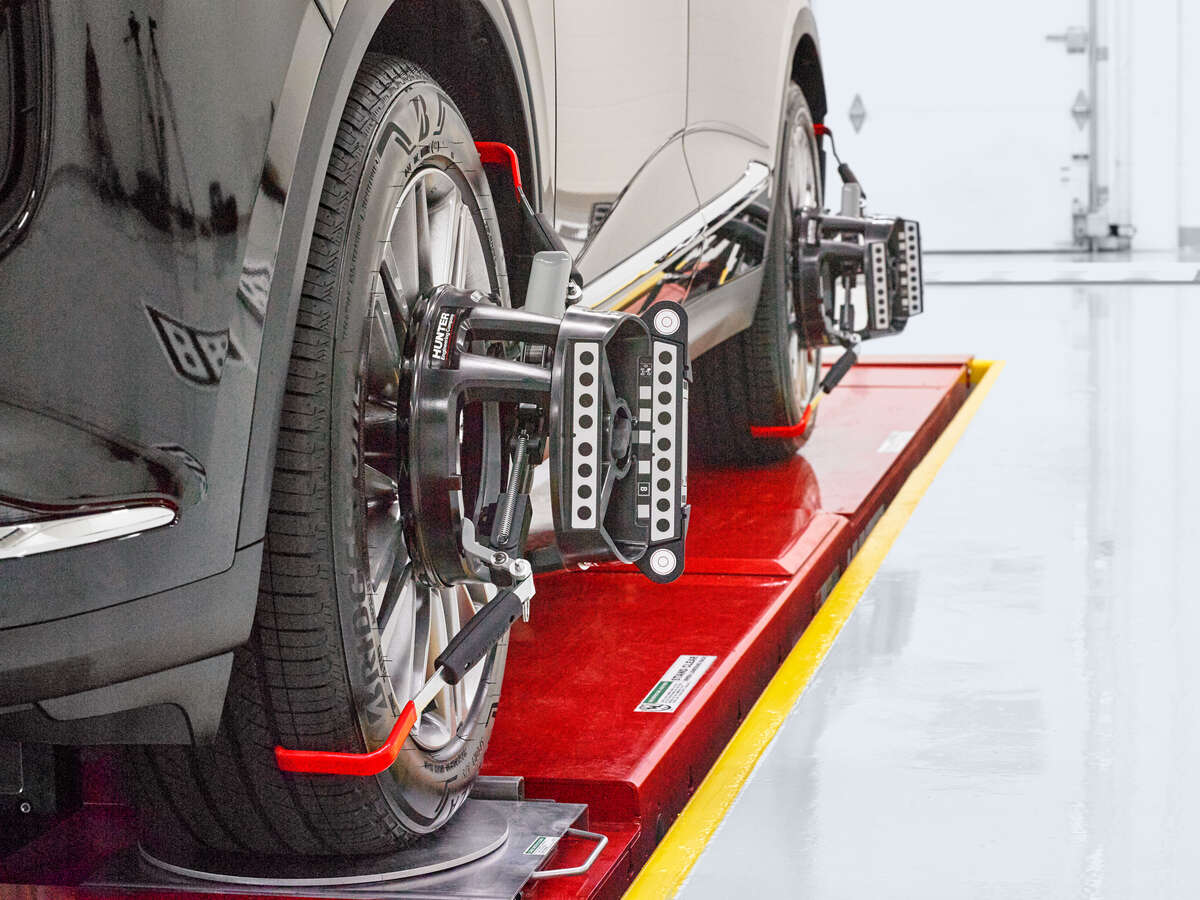
Collision Shops and ADAS: What do the Numbers Say?
Collision shops and ADAS
They say profit is moving in the wrong direction...

Industry Insights ADAS Articles
View more ADAS articles written from Hunter's industry experts.


